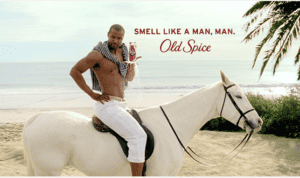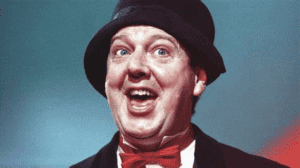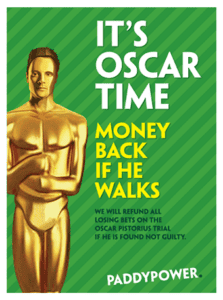So why write an article about humour in advertising?
Quite recently, I was discussing a creative brief with a client. They were looking for something different to the norm, something unusual, arresting. They suggested that we might try humour in our response.
It seemed like an unusual request. This was a B2B brand, delivering an important service to its clients – an important part of the supply chain. Serious stuff.
Humour just didn’t feel right for the brand.
So that got me thinking. Why the request to consider a ‘humorous’ creative execution? What is it about humour that’s attractive to us as marketers?
In the end, we didn’t use humour, and we were right not to.
The end result was interesting and quirky, admittedly – but not funny.
So when is it appropriate to use humour in marketing?
Want to hear a good joke?
OK, here’s my favourite joke of all time.
Q: What’s got eight legs and one eye?
A: Two tables and half a pig’s head 😊
Now, you might not think that’s funny. But to me it’s hilarious. I’ve told the joke hundreds of times, and it’s still hilarious.
To me.
I’ve never really thought about why I find it funny, I just do. But when I was considering the thought behind this blog, I thought I’d look into it.
I asked the opinion of my 17-year old son.
“Tell me why that joke is funny”, I said.
“It’s not funny, you’re an idiot”, he replied.
So I asked Chat GPT instead.
“Tell me why that joke is funny”, I said.
Thankfully, Chat GPT was more gracious and accommodating than my son. It came back with the following explanation:
The joke you’ve mentioned relies on a couple of comedic techniques: incongruity and surprise. At the start, the question sets up an expectation that you’re about to hear about some bizarre creature with eight legs and one eye. In most Western contexts, eight legs often conjures the image of a spider, and the “one eye” just adds to the intrigue. It’s like a setup for a monster movie.
But then, the punchline subverts those expectations entirely. Instead of a creature, you get an absurdly literal answer: two tables (each with four legs) and half a pig’s head (with one eye). The surprise comes from this abrupt shift from the fantastical to the mundane and literal. It’s as if you’re expecting to open a door to a treasure vault, but you find a broom closet instead.
I’m actually very happy with that answer, it makes me sound more intelligent than I am, and perhaps explains why I like Douglas Adams and Neil Gaiman so much.
Can these principles be applied to marketing?
Yes they can.
Comedy that subverts expectations can be hugely attention grabbing, and exceptionally memorable.
And who doesn’t want that for their advertising?
We all know that we’re exposed to eleventy-billion* marketing messages every single day, so ads that get noticed and are subsequently remembered are of course, a good thing.
Grabbing attention is a pre-requisite for successful advertising.
Which is why adding humour to our ads can be a big temptation.
There are plenty of great advertising examples where an absurdity has been used to comic effect, and paid off handsomely.
Take Old Spice for example. In the 1970, it was all crashing waves, surfing and general manliness. Not a hint of a joke in sight.
“The man your man could smell like”
But for the modern era, Old Spice turned the entire concept of the macho, suave man on its head with this campaign, where the stereotype of how a ‘man’ should be, quickly morphs into bizarre journey.
A man on a horse, diamonds, a boat, and ‘tickets to that thing you like’ – the absurdities pile on top of each other to create something totally unexpected, genuinely funny and therefore, memorable.
So that’s it then? Be more absurd with your advertising?
Well, there’s clearly a case for humour in advertising.
But there’s a lot to consider.
Firstly, there’s the issue that our senses of humour are all different. Humour varies from culture to culture. A knee slapper in the UK could be deeply offensive in Croatia.
Not everyone finds Jimmy Carr funny. Some prefer Jimmy Tarbuck. Or Jimmy Cricket (God help them). So where do you pitch your humour?
I might laugh at something that someone else takes offence at.
Half a pig’s head might not be funny to a vegan (please remember it’s the absurdity that’s funny, not the pig’s head, or the missing bit of it)
Ricky Gervais has a lot to say about people taking offence.
His view is that offence is subjective – and the subjectivity resides with the individual feeling offended (or not), rather than with the person making the joke. Essentially, offence is in the eye of the beholder.
Gervais suggests that if a joke is well crafted and its intention is to make people laugh rather than cause harm, then no topic should be off-limits, and no offence should be taken.
It’s a reasonable view and I tend to agree. But the reality is, that even if a joke is well-intended, it can (and often does) still cause offence.
Which can be, of course, a big problem for advertisers.
Even brands that court controversy can take things too far.
Paddy Power – funny, or not funny?
Paddy Power, for instance, who went for broke in 2014 with their “Oscar Time” campaign.
The advert gave gamblers their money back if Oscar Pistorius, accused of murdering his girlfriend Reeva Steenkamp, was acquitted at trial. It featured an Oscar statuette remodelled to look like Pistorius himself.
The headline: “It’s Oscar Time. Money Back If He Walks.”
Attention-grabbing? Absolutely.
In good taste? Well, certainly not for some.
Public outcry was swift and brutal. Over 5,200 complaints poured into the Advertising Standards Authority, making it one of the most complained-about campaigns ever.
Anti-domestic violence groups were up in arms, and a petition calling for the advert’s removal gained traction.
Paddy Power’s CFO Cormac McCarthy wasn’t exactly remorseful. He argued that they were “just responding to demand,” dismissing ethical concerns as a “matter of opinion.”
The ASA was definitely not amused and ordered the ad to be pulled “with immediate effect,” a move as rare as it is telling.
This isn’t just about Paddy Power crossing a line; it’s about the broader question of how far a brand should go to get noticed.
Some people found it funny.
When I told my 17-year-old about it, he laughed. What 17-year-old doesn’t like subversive?
But while they succeeded in turning heads, Paddy Power failed, according to the ASA, to read the room.
Paddy Power would argue that all publicity is good publicity.
And was their target audience offended? Probably not.
Maybe they were targeting 17-year-olds?
Either way, they knew their joke would cause offence; it was clearly intended to cause controversy.
It was just a joke.
But was the joke well-crafted? Does it satisfy the Ricky Gervais test?
In this case, it doesn’t really matter. If the intention is to cause offence (at least to some people), then the audience has the right to be offended, regardless if it’s well-crafted or not.
So clearly, when using ‘humour’ you’ve got to be careful.
Humour is subjective.
The risk of causing offence isn’t the only issue. Comedy simply isn’t appropriate for every brand.
Do you expect your bank to be zany?
Do you want a funny financial adviser?
Do you want a commercial architect to be silly, or irreverent?
You’ve got to start with your brand personality
Your brand is non-negotiable.
Your brand might be silly, or it might have gravitas. But all strong brands have one thing in common.
They’re consistent.
A serious brand, dealing with serious issues, generally doesn’t get to tell jokes. It doesn’t get to be funny.
And the opposite is also true.
I don’t expect M&Ms to have an opinion on climate change. It doesn’t fit.
So, if you’re ever tempted to try ‘funny’ advertising, ask yourself, ‘does my brand personality have licence to be funny?’
And if you don’t know the answer to that question, then maybe you need to define your brand personality a bit better.
I know someone who can really help with that.
*No-one knows the real number, but it’s a lot.





